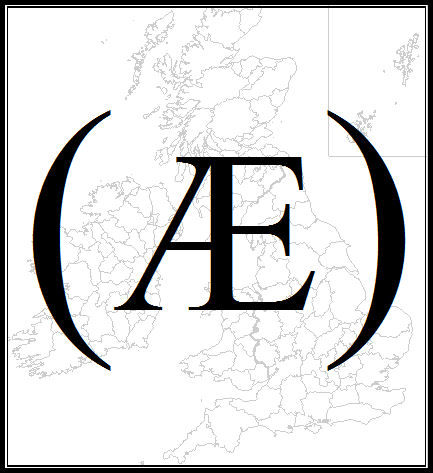
An Atlas of Alexander J. Ellis's
The
Existing Phonology of English Dialects
Ellis's Methods
Maps
References
Home
The EPED only provides data for one variety in Ireland - a reconstruction, based on written records, of the extinct divergent dialect of Forth and Bargy in Wexford (Ellis 1889: 25-31). The data Ellis provides for this variety are not particularly copious, consisting as they do of transcriptions in the Palaeotype of two short poems and a selection of the Classified Word List. The Forth and Bargy data are, nevertheless, included in this online atlas of the EPED.
Ellis explains the reason for the lack of Irish English data in the EPED - he intended only to include data from traditional dialects of English and Scots which represented endogenous developments of Old English, whereas in Ireland English was "a comparatively recently imported speech" (Ellis 1889: 1).
But Ellis did, in fact, provide details of two other traditional forms of Irish English speech - those of Belfast and Cork - in the 4th volume of On Early English Pronunciation (Ellis 1869: 1230-1243). The Belfast data were provided by Mr. David Patterson's pamphlet The Provincialisms of Belfast and the Surrounding Districts pointed out and corrected (1860), supplemented by communciations on pronunciation from David Patterson himself and a Mr. W. H. Patterson. The Cork data were provided by a Mr. T. M. Healy and were intended to show where the pronunciation of Cork and Belfast differed. The Belfast and Cork data in Ellis (1869) consist of notes on consonant and vowel phonology rather than dt., cs. or (c)wl. transcriptions, and contain information on a reasonable number of words. Interestingly, Ellis's account of the phonology of Belfast English contains what appears to be one of the earliest descriptions of Scottish Vowel Length Rule conditioning of the PRICE vowel (Ellis 1869: 1237). These locations are also included in this atlas where relevant data is available.
One other source of data on the phonology of 19th Irish English transcribed in the Palaeotype is J. H. Staples' "Notes on Ulster English dialect for comparison with English dialects by the late A. J. Ellis, F.R.S., with samples in Palaeotype, comparison specimen and wordlist" (Transactions of the Philological Society 1896). Staples describes the pronunciation of local dialect speech in Belfast and in the parish of Lissan on the Tyrone/Londonderry border, without distinguishing clearly between the two varieties (which he tells us were very similar in any case). Staples provides a cs. and a part of the cwl. (with many other words added), both transcribed in the Palaeotype. He notes that his data were intended for inclusion in the EPED but were left out due to limits on time and space.
Although Staples' data are not included in the EPED, and although it is not clear whether his data are representative of Belfast or Lissan, they provide a fascinating insight into traditional forms of Irish English in the late 19th century. As a result, I have included them in the online atlas, assigning them to Lissan geographically so that they can be represented separately from Ellis's own Belfast data. The Lissan data point should be taken to indicate that the pronunciation was found in either Belfast or Lissan, and, according to Staples, across much of Ulster.
NOTE: The Northern Irish border is not shown on the maps on this website because the EPED data is from the 19th century and the border did not come into existence until 1921.